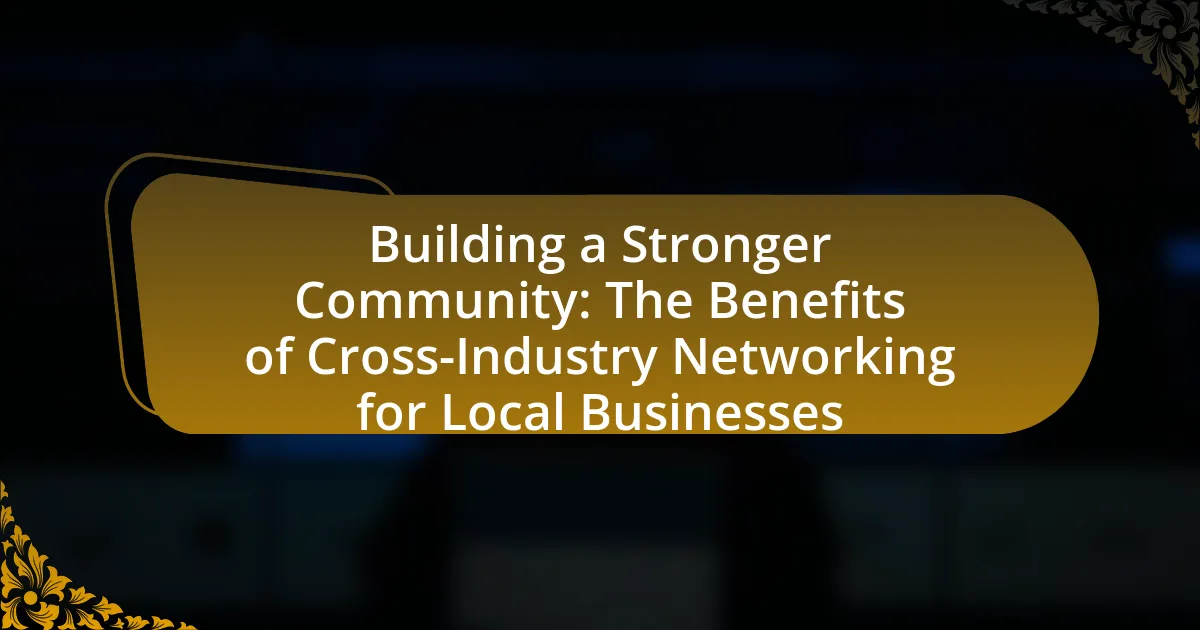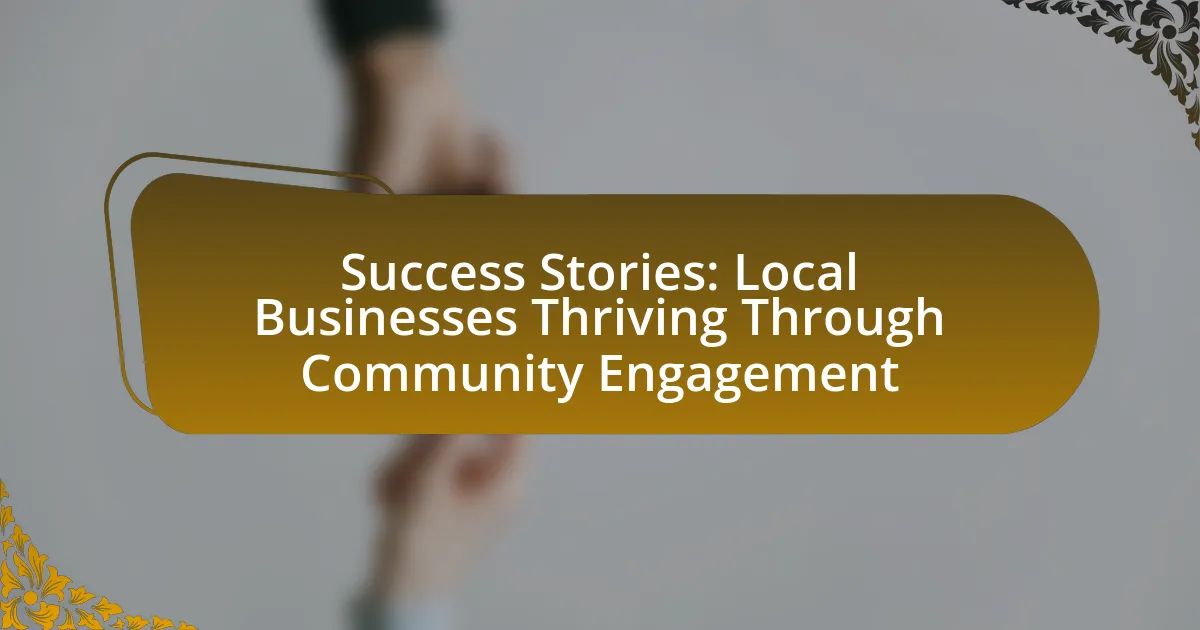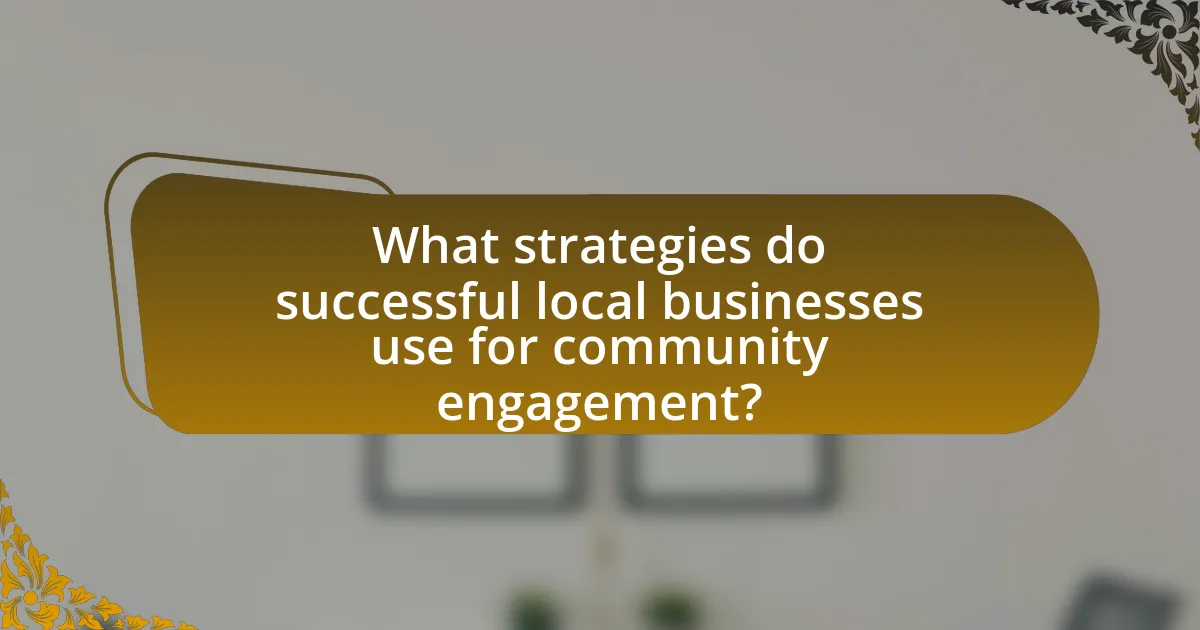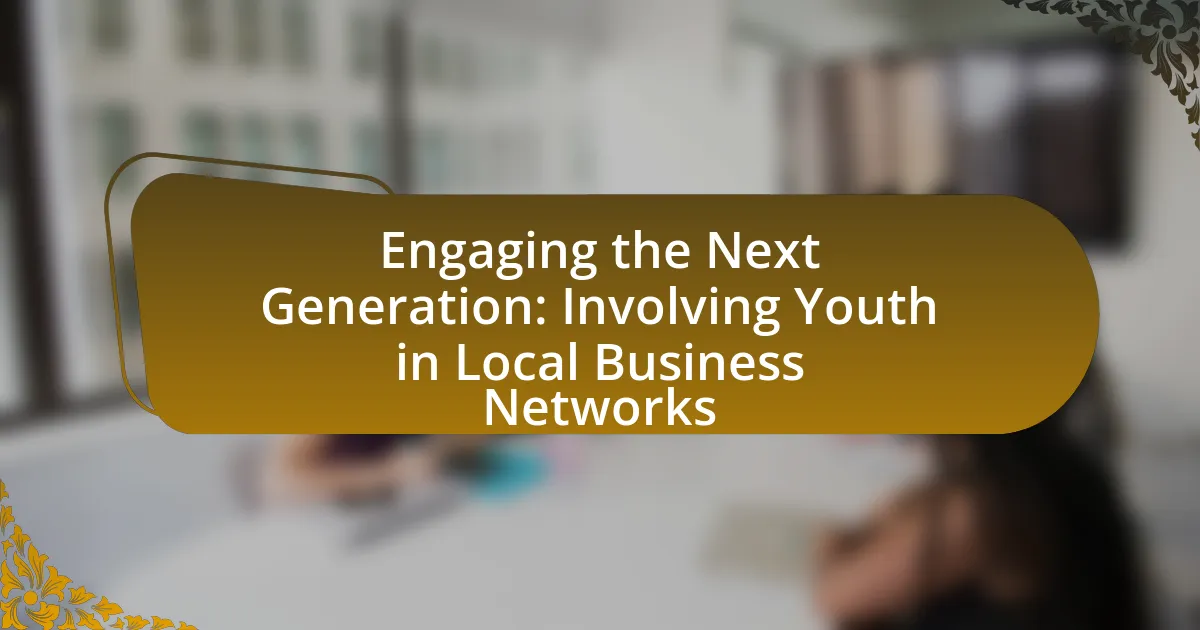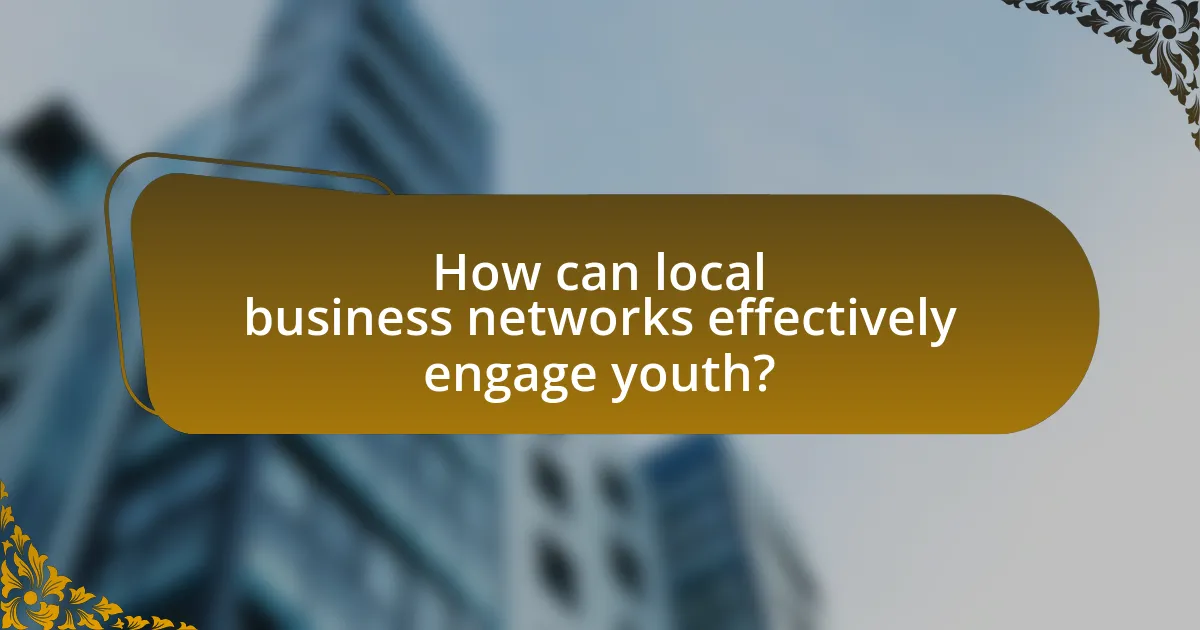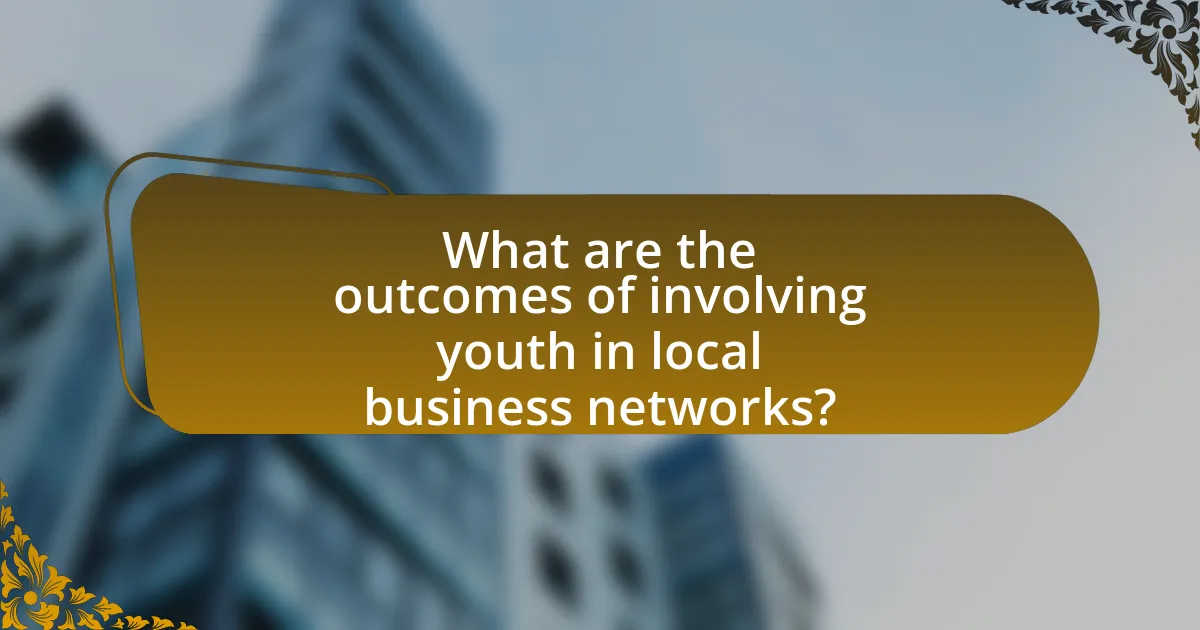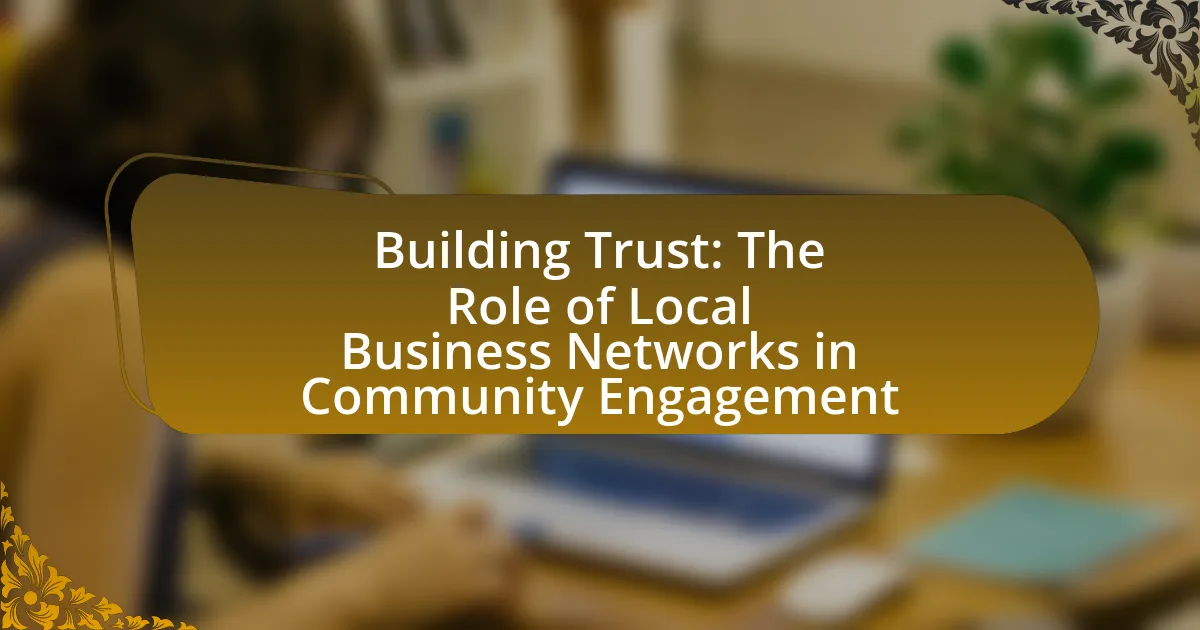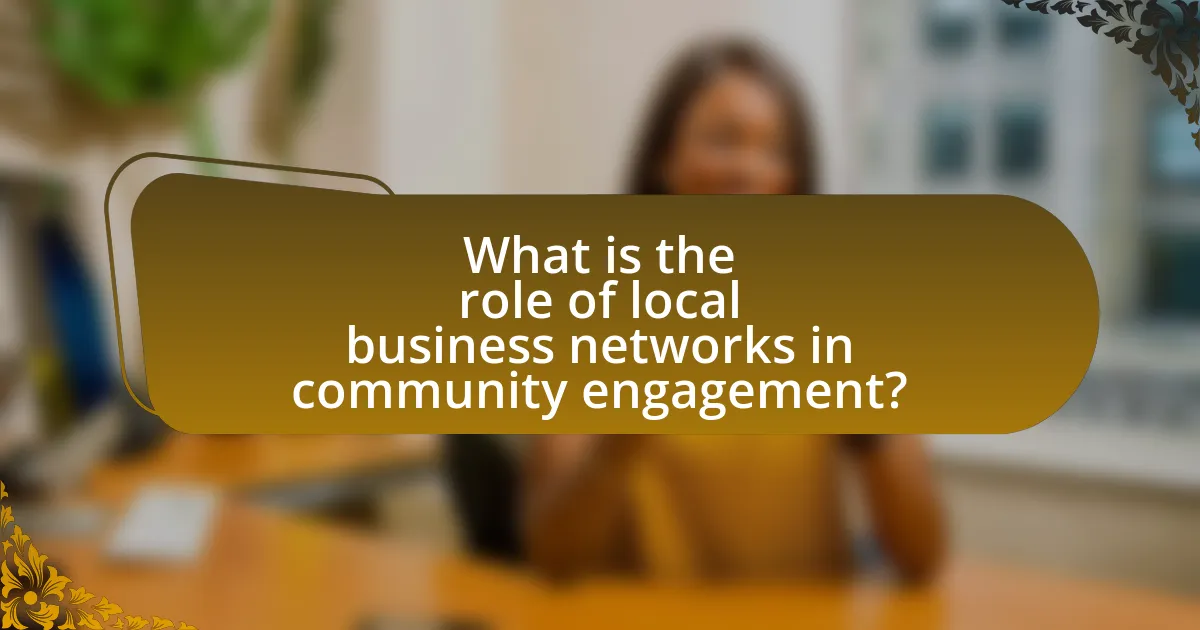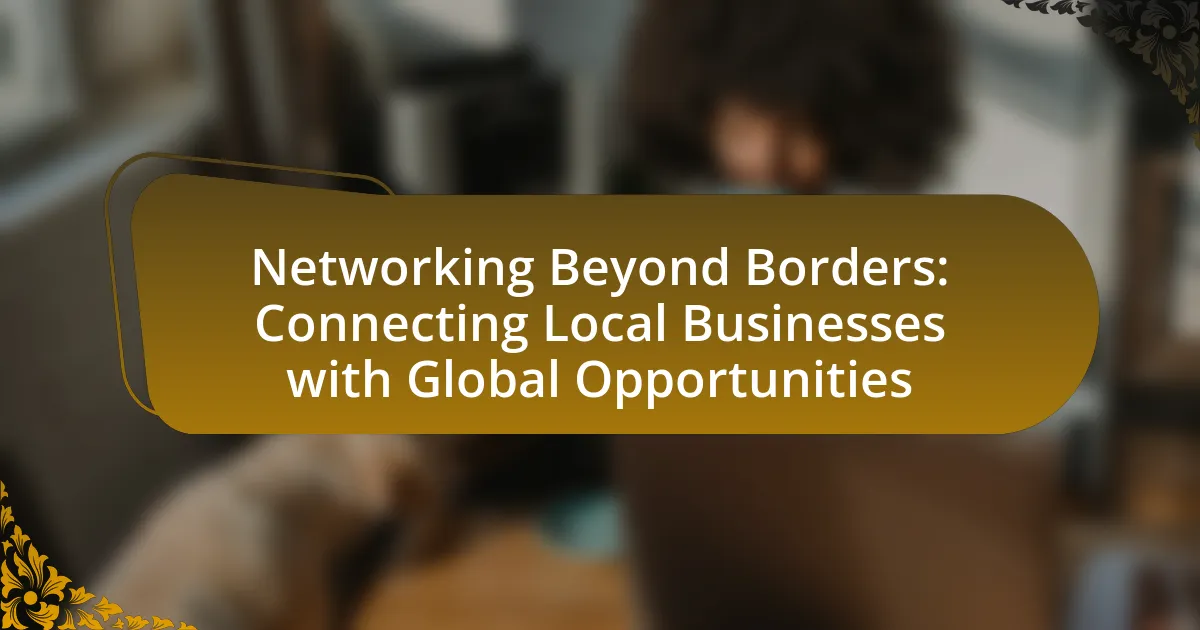Local chambers of commerce serve as vital entities in fostering community engagement by connecting businesses with local residents and organizations. They facilitate networking opportunities, promote local events, and advocate for community interests, thereby enhancing civic participation and economic development. The article explores how chambers define community engagement, the key elements involved, and the strategies they employ to measure effectiveness and adapt to changing needs. Additionally, it discusses the historical context of chambers in community development, the challenges they face, and best practices for leveraging technology and feedback to improve engagement efforts.
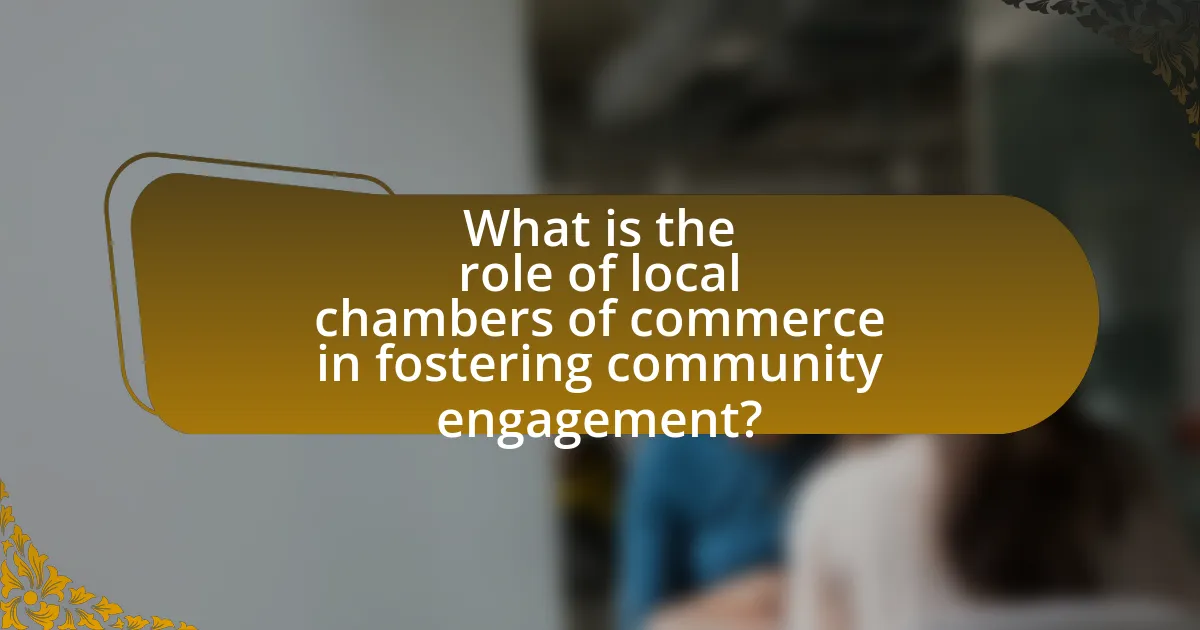
What is the role of local chambers of commerce in fostering community engagement?
Local chambers of commerce play a crucial role in fostering community engagement by serving as a bridge between businesses and the local community. They facilitate networking opportunities, promote local events, and advocate for community interests, thereby enhancing civic participation. For instance, according to the U.S. Chamber of Commerce, local chambers often organize community events such as fairs and business expos, which encourage residents to engage with local businesses and each other. Additionally, chambers provide resources and support for local initiatives, helping to mobilize community members around shared goals and projects. This active involvement not only strengthens local economies but also builds a sense of community identity and collaboration.
How do local chambers of commerce define community engagement?
Local chambers of commerce define community engagement as the active participation of businesses and organizations in local initiatives that enhance the quality of life and economic vitality of the community. This definition encompasses collaboration with local stakeholders, including government entities, non-profits, and residents, to address community needs and promote local development. Evidence of this definition can be found in various chamber initiatives, such as organizing community events, supporting local charities, and advocating for policies that benefit the community, which collectively demonstrate their commitment to fostering a vibrant local environment.
What are the key elements of community engagement as seen by local chambers?
The key elements of community engagement as seen by local chambers include collaboration, communication, and support for local initiatives. Local chambers prioritize collaboration by fostering partnerships among businesses, government entities, and community organizations to address local issues effectively. Communication is essential, as chambers facilitate dialogue between stakeholders to ensure that community needs and concerns are heard and addressed. Additionally, chambers provide support for local initiatives by promoting events, programs, and resources that enhance community well-being and economic development. These elements are vital for building strong, resilient communities and are evidenced by numerous successful chamber-led initiatives that have positively impacted local economies and social cohesion.
How do local chambers measure the effectiveness of community engagement?
Local chambers measure the effectiveness of community engagement through surveys, participation metrics, and feedback mechanisms. Surveys collect data on community member satisfaction and perceived value of chamber activities, while participation metrics track attendance at events and involvement in programs. Feedback mechanisms, such as focus groups or community forums, provide qualitative insights into community needs and preferences, allowing chambers to adjust their strategies accordingly. These methods collectively enable chambers to assess their impact and refine their engagement efforts based on concrete data.
Why are local chambers of commerce important for community development?
Local chambers of commerce are crucial for community development because they serve as a hub for local businesses, fostering economic growth and collaboration. By providing networking opportunities, chambers facilitate partnerships among businesses, which can lead to job creation and increased local investment. According to the U.S. Chamber of Commerce, communities with active chambers experience a 20% higher growth rate in small businesses compared to those without. Additionally, chambers advocate for local policies that benefit the community, ensuring that the interests of local businesses are represented in governmental decisions. This advocacy contributes to a more favorable business environment, which is essential for sustainable community development.
What historical context supports the role of chambers in community development?
Chambers of commerce have historically played a pivotal role in community development, particularly since their inception in the late 18th century. Initially established to advocate for business interests, these organizations evolved to address broader community needs, such as infrastructure development and local economic growth. For instance, the first chamber of commerce was founded in Marseille, France, in 1599, aiming to promote trade and improve local economic conditions. Over time, chambers in various countries began to engage in community development initiatives, such as supporting education, public health, and civic engagement, thereby fostering a collaborative environment between businesses and local governments. This historical context illustrates how chambers have transitioned from mere business advocacy to integral players in enhancing community well-being and development.
How do local chambers contribute to economic growth in communities?
Local chambers contribute to economic growth in communities by supporting local businesses through advocacy, networking opportunities, and resources. They advocate for policies that benefit the local economy, such as tax incentives and infrastructure improvements, which can lead to job creation and increased investment. Additionally, chambers facilitate networking events that connect business owners, fostering collaborations that can enhance productivity and innovation. According to the U.S. Chamber of Commerce, businesses that engage with their local chamber report 30% higher revenue growth compared to those that do not. This demonstrates the significant impact local chambers have on driving economic development within their communities.
What strategies do local chambers of commerce use to foster community engagement?
Local chambers of commerce employ various strategies to foster community engagement, including organizing networking events, providing educational resources, and advocating for local businesses. Networking events, such as mixers and community fairs, facilitate connections among local businesses and residents, enhancing community ties. Educational resources, including workshops and seminars, empower community members with knowledge on topics like entrepreneurship and financial literacy, promoting active participation. Additionally, chambers advocate for local businesses by lobbying for policies that benefit the community, thereby strengthening the local economy and encouraging civic involvement. These strategies collectively enhance community engagement by creating a supportive environment for collaboration and growth.
How do local chambers organize events to promote community involvement?
Local chambers organize events to promote community involvement by coordinating activities that encourage participation from local businesses and residents. These events often include networking opportunities, workshops, and community service projects designed to foster collaboration and strengthen local ties. For example, chambers may host annual festivals or fairs that showcase local businesses, providing a platform for them to engage with the community and attract new customers. Additionally, chambers frequently partner with local organizations to address community needs, such as organizing charity events or educational seminars, which further enhances community engagement and involvement.
What partnerships do local chambers form to enhance community engagement?
Local chambers of commerce form partnerships with various organizations, including local governments, non-profits, educational institutions, and businesses, to enhance community engagement. These collaborations often focus on initiatives such as workforce development programs, community events, and local business support, which foster a sense of community and encourage civic participation. For example, partnerships with schools can lead to mentorship programs that connect students with local businesses, while collaborations with non-profits can result in community service projects that address local needs. Such strategic alliances leverage resources and expertise, ultimately strengthening community ties and promoting economic growth.
How do local chambers of commerce adapt to changing community needs?
Local chambers of commerce adapt to changing community needs by actively engaging with local businesses and residents to identify emerging issues and opportunities. They conduct surveys and hold forums to gather feedback, which informs their initiatives and programs. For example, during economic downturns, chambers may pivot to offer resources such as business development workshops or networking events tailored to support struggling enterprises. Additionally, they often collaborate with local government and organizations to address specific community challenges, such as workforce development or public health crises, ensuring their strategies remain relevant and effective. This responsiveness is evidenced by the increased focus on digital transformation initiatives during the COVID-19 pandemic, where many chambers provided online resources and support to help businesses transition to e-commerce.
What challenges do local chambers face in fostering community engagement?
Local chambers face several challenges in fostering community engagement, primarily including limited resources, lack of awareness, and varying levels of member participation. Limited financial and human resources restrict their ability to organize events and outreach programs effectively. Additionally, many community members may not be aware of the chamber’s role or the benefits of engagement, leading to low participation rates. Furthermore, differing levels of interest and commitment among members can hinder collaborative efforts, making it difficult to create a unified approach to community engagement. These challenges collectively impact the chamber’s effectiveness in building strong community ties and promoting local initiatives.
How can local chambers overcome these challenges?
Local chambers can overcome challenges by enhancing collaboration with local businesses and community organizations. By fostering partnerships, chambers can leverage shared resources and expertise to address common issues, such as economic development and community engagement. For instance, a study by the U.S. Chamber of Commerce found that chambers that actively engage in collaborative initiatives see a 20% increase in member satisfaction and retention. This demonstrates that strategic alliances can effectively mitigate challenges faced by local chambers, ultimately strengthening their role in community engagement.
What best practices can local chambers of commerce implement for effective community engagement?
Local chambers of commerce can implement best practices such as fostering partnerships with local organizations, hosting community events, and utilizing digital communication platforms for effective community engagement. By collaborating with schools, nonprofits, and local businesses, chambers can create initiatives that address community needs, thereby enhancing their relevance and impact. Hosting events like town hall meetings or business expos encourages participation and dialogue among residents, which strengthens community ties. Additionally, leveraging social media and email newsletters allows chambers to disseminate information quickly and engage with a broader audience, ensuring that community members are informed and involved in local issues. These practices not only promote transparency but also build trust within the community, leading to increased participation and support for local initiatives.
How can local chambers leverage technology to enhance engagement?
Local chambers can leverage technology to enhance engagement by utilizing digital platforms for communication and networking. For instance, they can implement online forums and social media channels to facilitate real-time interaction among members, which fosters a sense of community. Additionally, chambers can use email newsletters and mobile apps to disseminate information about events, resources, and opportunities, ensuring that members remain informed and connected. According to a study by the American Chamber of Commerce Executives, 70% of chambers that adopted technology-driven engagement strategies reported increased member participation in events and initiatives. This demonstrates that effective use of technology can significantly boost engagement levels within local chambers.
What role does feedback play in improving community engagement strategies?
Feedback is essential for enhancing community engagement strategies as it provides insights into the needs and preferences of community members. By actively soliciting and analyzing feedback, local chambers of commerce can identify gaps in their engagement efforts and adjust their strategies accordingly. For instance, a study by the International Association for Public Participation found that organizations that incorporate community feedback into their planning processes see a 30% increase in participation rates. This demonstrates that feedback not only informs but also strengthens the connection between chambers of commerce and the communities they serve, leading to more effective and responsive engagement initiatives.
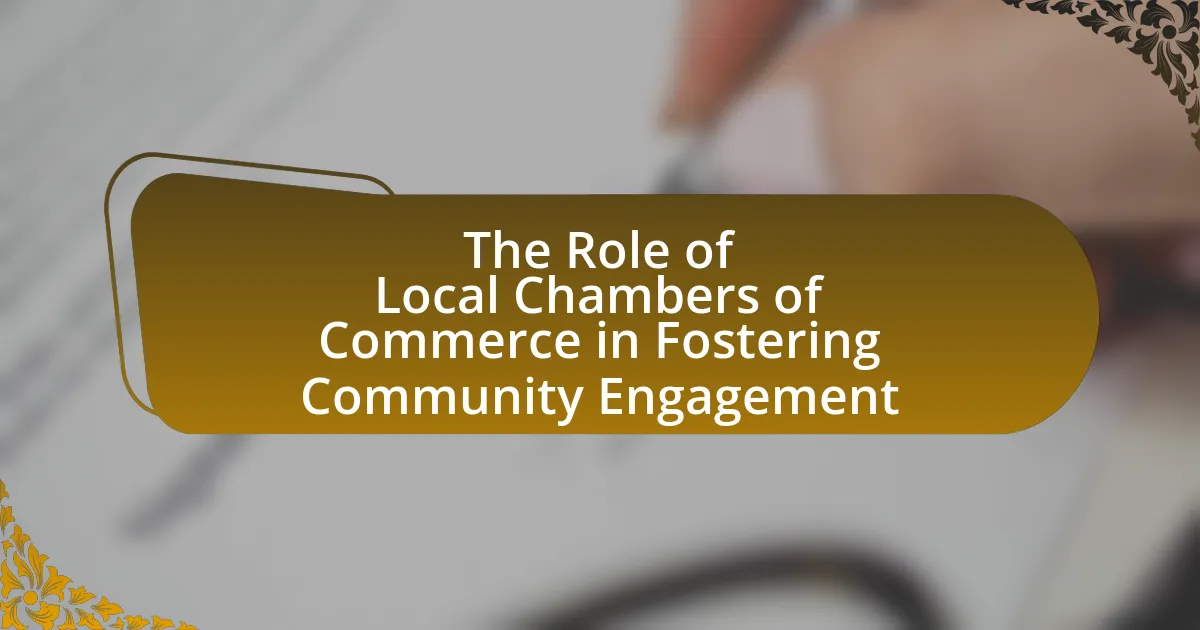
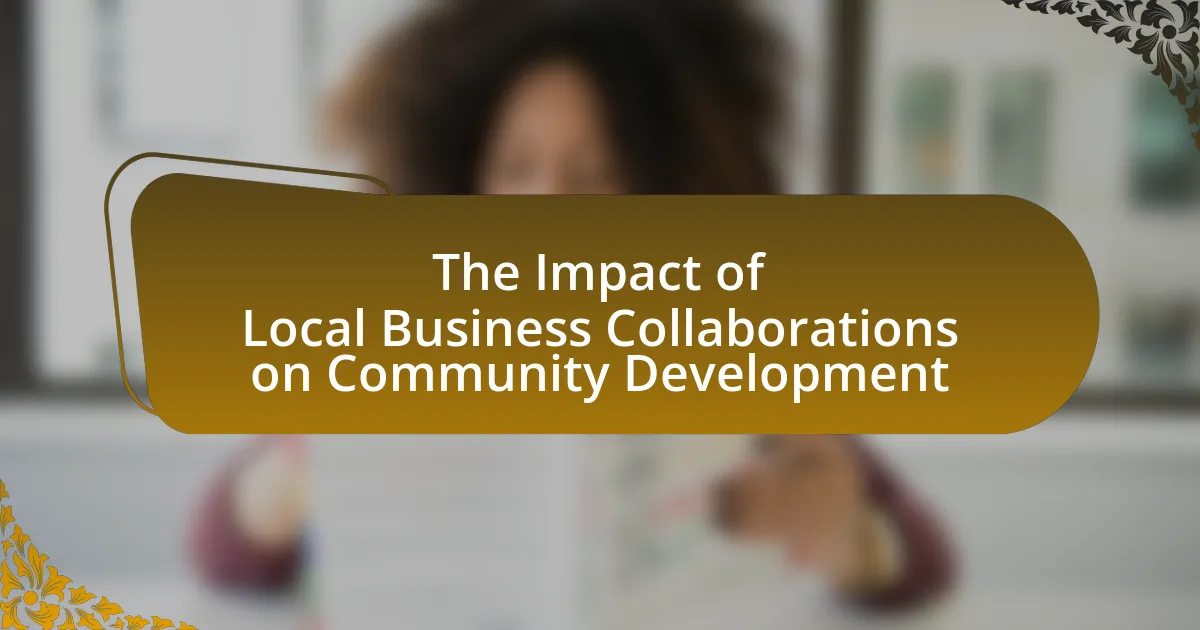










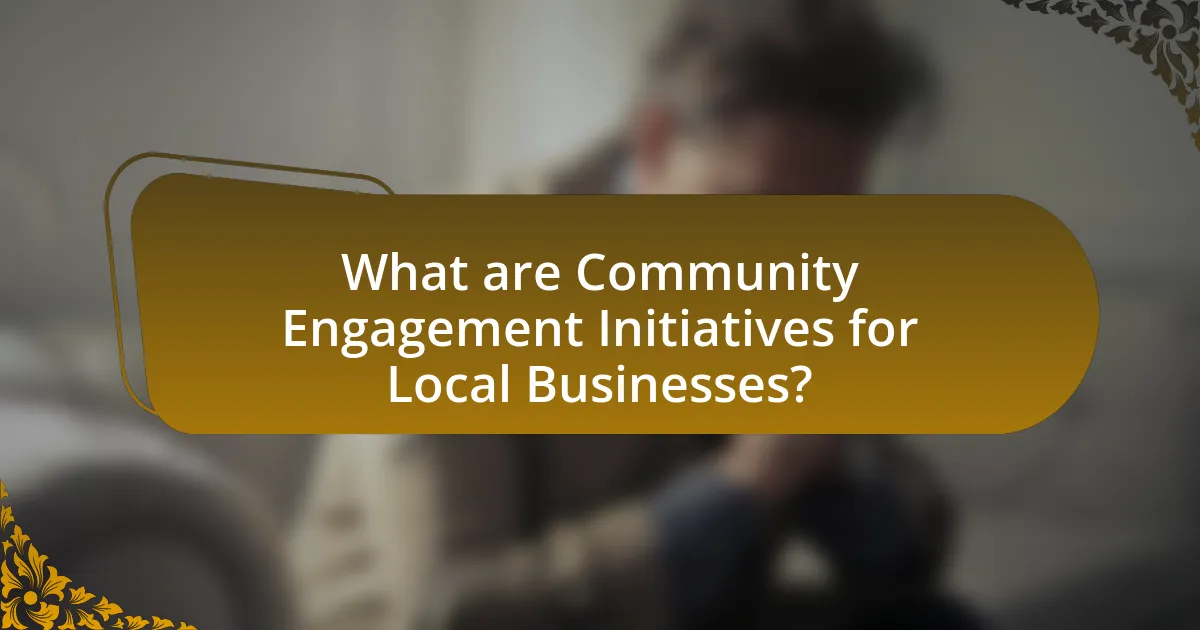
-for-Measuring-Success-2.webp)

